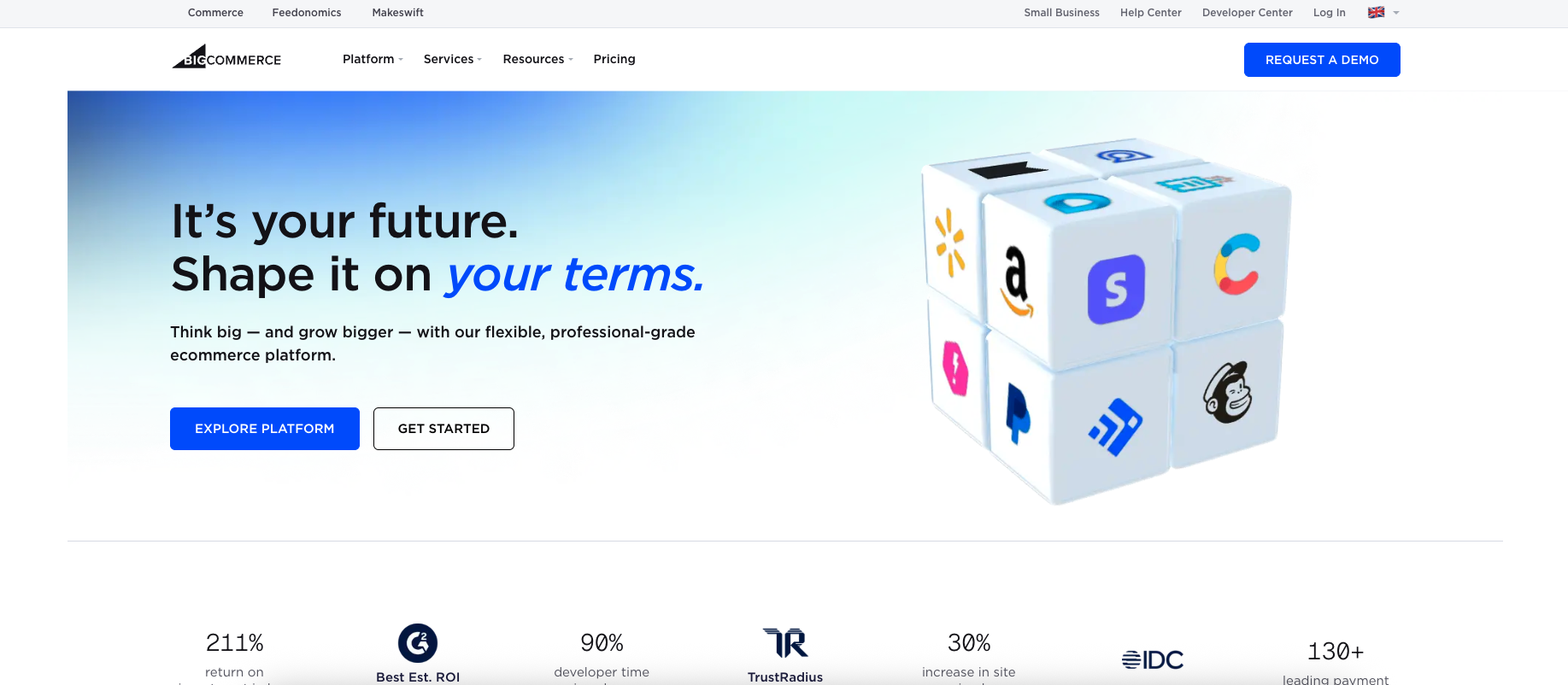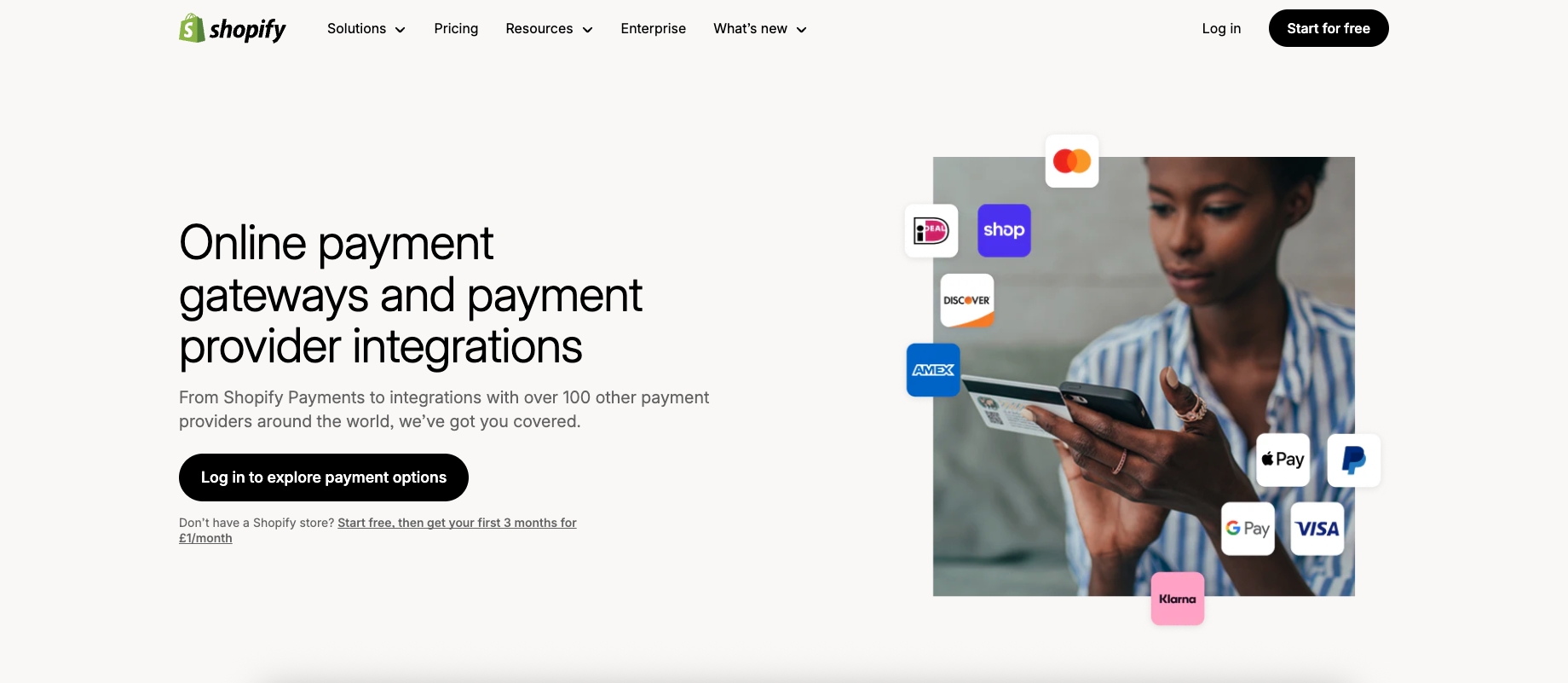How to create an online store
Everything you need to start in ecommerce

With more than 20% of all retail transactions happening online, launching an online store has never been more profitable. And thanks to the best ecommerce platforms, such as Shopify, and the rise of generative AI, it’s now easier than ever to start an ecommerce business.
But there are two sides to every coin. The barrier to entry for ecommerce is at an all-time low and the competition is heating up. Whether you’re starting a new business from the ground up, or simply trying to prepare your local business for digital, this guide will help you connect with the state of ecommerce right now and equip you with all the tools and information you need to get started with an advantage.
You’ll learn how to conceive a new digital business from scratch, build an online storefront using one of the best website builder platforms, source products and manage transactions, plus a whole lot more. If this isn’t all completely new to you, feel free to skip forward to the sections that make most sense. With that said, let’s unpack this.
Step 1: Create a business plan
An ecommerce business plan is your strategic roadmap for online success. It's a comprehensive document that outlines your business strategy, goals, target market, marketing approaches, financial projections, and operational framework. This blueprint provides structured guidance for decision-making and ensures long-term viability of your ecommerce venture.
Think of your business plan as more than just paperwork. It serves multiple purposes - from attracting investors to keeping you focused on core objectives. The plan defines your unique value proposition and helps you stay aligned with your vision as you navigate the competitive ecommerce landscape.
Your ecommerce business plan should include:
- An executive summary
- Company description
- Detailed market analysis and competitor research
- Product specifics
- Marketing strategy and budget
- A step-by-step operations plan
- Financial projections
- Protocols for risk management
A well-crafted business plan becomes your competitive advantage. It forces you to research your market thoroughly and understand your customers deeply. Modern entrepreneurs can leverage AI-powered business plan generators like Bizplanr, Venturekit, and Copy.ai to streamline this process. These tools can create professional plans in under 15 minutes, offering industry-specific templates and financial modeling capabilities.
Sign up to the TechRadar Pro newsletter to get all the top news, opinion, features and guidance your business needs to succeed!
Step 2: Source products
Your product sourcing strategy fundamentally shapes your entire revenue model and operational structure. The method you choose affects everything from profit margins to inventory management, shipping logistics, and customer experience. This decision impacts your startup costs, scalability potential, and long-term business sustainability.
Different sourcing approaches offer distinct advantages and challenges. Your choice depends on factors like available capital, desired control level, and business goals.
Here are the main product sourcing options:
- Self-manufacturing or DIY products: Create your own items from raw materials, giving you complete quality control but requiring significant time investment and production skills.
- Working with manufacturers: Partner directly with producers for custom products or bulk orders, offering better pricing and customization but requiring larger minimum orders.
- Wholesale purchasing: Buy products in bulk from distributors at discounted rates, providing good margins with moderate investment requirements.
- Dropshipping: List products without holding inventory, where suppliers handle fulfillment directly to customers, minimizing upfront costs but reducing profit margins.
- Reselling and consignment: Purchase existing products from various sources like thrift stores, estate sales, or consigners, ideal for vintage or unique items.
Choosing your ideal sourcing method requires honest assessment of your resources and goals. Consider your available capital, desired profit margins, and how much operational control you want. Beginners often start with dropshipping for its low barrier to entry, while established businesses might prefer wholesale or manufacturing for better margins.
Tools like DSers and Spocket can help you find reliable suppliers and automate order processing. These platforms offer supplier directories, quality ratings, and integration with popular ecommerce platforms. We recommend starting small with one sourcing method, then diversifying as you gain experience and understand your market better.
Step 3: Build your online storefront

Your digital storefront is the heart of your ecommerce business. It's not just a website - it's your primary sales channel, customer service hub, and brand ambassador all rolled into one. Unlike physical stores, your digital storefront operates 24/7, providing continuous opportunities for sales and customer engagement across all devices.
The importance of your storefront cannot be overstated in today's market. Modern consumers expect seamless, comprehensive online experiences influenced by giants like Amazon. Your storefront must deliver convenience, functionality, and trust to compete effectively in the digital marketplace.
You have several approaches for building your storefront, each with distinct advantages. The right choice depends on your budget, technical skills, and customization needs.
- No-code ecommerce platforms: Tools like Shopify, BigCommerce, and Square Online offer user-friendly interfaces with built-in payment processing and inventory management. These platforms typically cost $29-300 monthly and work well for most small to medium businesses.
- AI-powered tools and generators: Emerging platforms use artificial intelligence to create customized storefronts based on your business needs. These tools can generate professional designs quickly but may offer limited customization options compared to traditional platforms.
- Professional design agencies: Full-service agencies provide custom development, SEO optimization, and ongoing support. This option costs significantly more but delivers highly customized solutions with professional marketing integration.
- In-house development: Building your own storefront offers maximum control and customization. This requires significant technical expertise, sourcing your own web hosting provider, and undertaking ongoing maintenance but eliminates monthly platform fees for larger businesses.
Remember, this process can be as simple or complex as you'd like. You're essentially balancing cost, quality, and autonomy. Most beginners benefit from starting with established platforms, then upgrading to custom solutions as their business grows and specific needs emerge.
Step 4: Present your products
Product presentation directly impacts your conversion rates and sales performance. The way you showcase items on your digital storefront influences customer purchasing decisions more than any other factor. Poor product presentation leads to cart abandonment, while compelling displays build trust and encourage immediate purchases.
Your product pages serve as virtual salespeople working around the clock. High-quality images, detailed descriptions, and strategic placement guide customers through the buying journey. Every element — from thumbnail positioning to checkout button color — affects whether browsers become buyers. Here are some conversion rate optimization tips to help you get the best results:
- Use multiple high-resolution images showing different angles, close-ups, and lifestyle contexts to help customers visualize ownership.
- Write compelling product descriptions that focus on benefits rather than features, addressing customer pain points and desires.
- Implement social proof elements like customer reviews, ratings, and user-generated photos to build credibility and trust.
- Optimize product page loading speed since even one-second delays can reduce conversions by up to 7%.
- Create clear call-to-action buttons with contrasting colors and action-oriented text like "Add to Cart" or "Buy Now."
A/B testing different presentation strategies helps you discover what resonates with your specific audience. Test everything from image layouts to description formats, measuring performance through conversion rates, time on page, and bounce rates. This data-driven approach eliminates guesswork and maximizes your sales potential.
Modern inventory management tools like Cin7 and Zoho Inventory simplify product uploads and tracking processes. These platforms integrate with major ecommerce platforms, automatically updating stock levels and preventing overselling. We recommend starting with your platform's built-in tools, then upgrading to specialized software as your catalog grows.
Step 5: Set up payment processors

Payment processing is one of your most complex decisions for online stores. These systems help you move money from customers to your business bank account. It’s a lot more complex than it sounds.
Payment processors operate with vastly different policies, security standards, and technical requirements. Some specialize in specific industries or locations, while others offer global coverage with varying fee structures. Each processor has unique fraud protection measures, chargeback policies, and integration choices that directly affect your operations.
Processing costs typically range from 2.9% to 3.5% per transaction, but international payments, chargebacks, and monthly fees can vary wildly between providers. Some even charge more for implementation and support, while others leave to hire third-party experts to get through those things.
But your choice also depends heavily on your chosen ecommerce platform, so it's not like you can work with whichever payment processor you want. Many platforms restrict you to their preferred payment partners. Shopify pushes Shopify Payments. WooCommerce lets you choose between Stripe, PayPal, and Square. And more open-ended platforms let you take your pick of payment processor from a list of integrations.
Step 6: Market your website
The democratization of ecommerce through no-code tools and AI platforms has created an unprecedented surge in online stores. Platforms like Shopify, Wix, and Squarespace enable anyone to launch professional storefronts within hours. This accessibility, combined with shifting consumer preferences toward digital shopping, has flooded the market with new competitors.
Standing out in this saturated landscape requires exceptional marketing creativity and strategic execution. Traditional advertising channels are increasingly expensive and less effective as consumers develop ad fatigue. Success now depends on authentic engagement, viral potential, and building genuine connections with your target audience through innovative campaigns.
Here are some recent marketing campaigns that achieved remarkable success:
- Labubu: Pop Mart's Labubu keychains became a global phenomenon through artificial scarcity and blind box mechanics. The company created intense FOMO by releasing limited quantities and rare variants, driving resale prices from $28 to over $1,000. Strategic influencer partnerships on TikTok generated millions of unboxing videos, while the cute-yet-creepy design appealed to diverse demographics from teenagers to art collectors. This campaign demonstrates how scarcity marketing combined with social media amplification can create explosive demand.
- Netflix's Streamberry: Netflix promoted Black Mirror's "Joan Is Awful" episode through a fictional streaming service that mirrored the show's premise. You could sign up to Streamberry to upload photos, unknowingly agreeing to have their images displayed on real billboards across the UK. This brilliant campaign highlighted how people ignore terms and conditions while creating genuine shock and viral social media buzz. The meta-approach perfectly aligned with Black Mirror's themes while generating massive organic engagement.
- Flo Health: The women's health app achieved 5 million video views and 200,000 engagements through strategic TikTok campaigns. Rather than one-off promotions, Flo built long-term relationships with health and wellness influencers who authentically integrated the app into their content. Their educational content marketing, including weekly baby growth stories with 61.24% watch rates, drove a 20% increase in trial subscriptions. This approach succeeded by addressing sensitive health topics with genuine expertise and relatability.
Marketing isn't optional for ecommerce success — it's the lifeblood that transforms your digital storefront from an empty website into a thriving business. Even the best products and user experiences mean nothing without customers who know you exist. Invest in marketing from day one, focusing on authentic connections rather than aggressive sales tactics.
Final thoughts
Ecommerce continues evolving rapidly with AI, no-code platforms, and shifting consumer expectations. Success depends on balancing accessibility with differentiation — while new tools make launching easier than ever, standing out requires more authentic engagement and strategic execution. Your ability to adapt quickly will make or break your long-term viability in this competitive space.
Looking ahead, we expect to see more democratization through ecommerce tools leading to increased competition for consumer attention. New entrants will need to prioritize genuine customer relationships over quick profits, lead with data for important decisions, and remain agile enough to pivot with market changes. Start with solid fundamentals, then continuously optimize your revenue model the more you learn about your space.

Ritoban Mukherjee is a tech and innovations journalist from West Bengal, India. These days, most of his work revolves around B2B software, such as AI website builders, VoIP platforms, and CRMs, among other things. He has also been published on Tom's Guide, Creative Bloq, IT Pro, Gizmodo, Quartz, and Mental Floss.
- Owain WilliamsB2B Editor, Website Builders & CRM
You must confirm your public display name before commenting
Please logout and then login again, you will then be prompted to enter your display name.